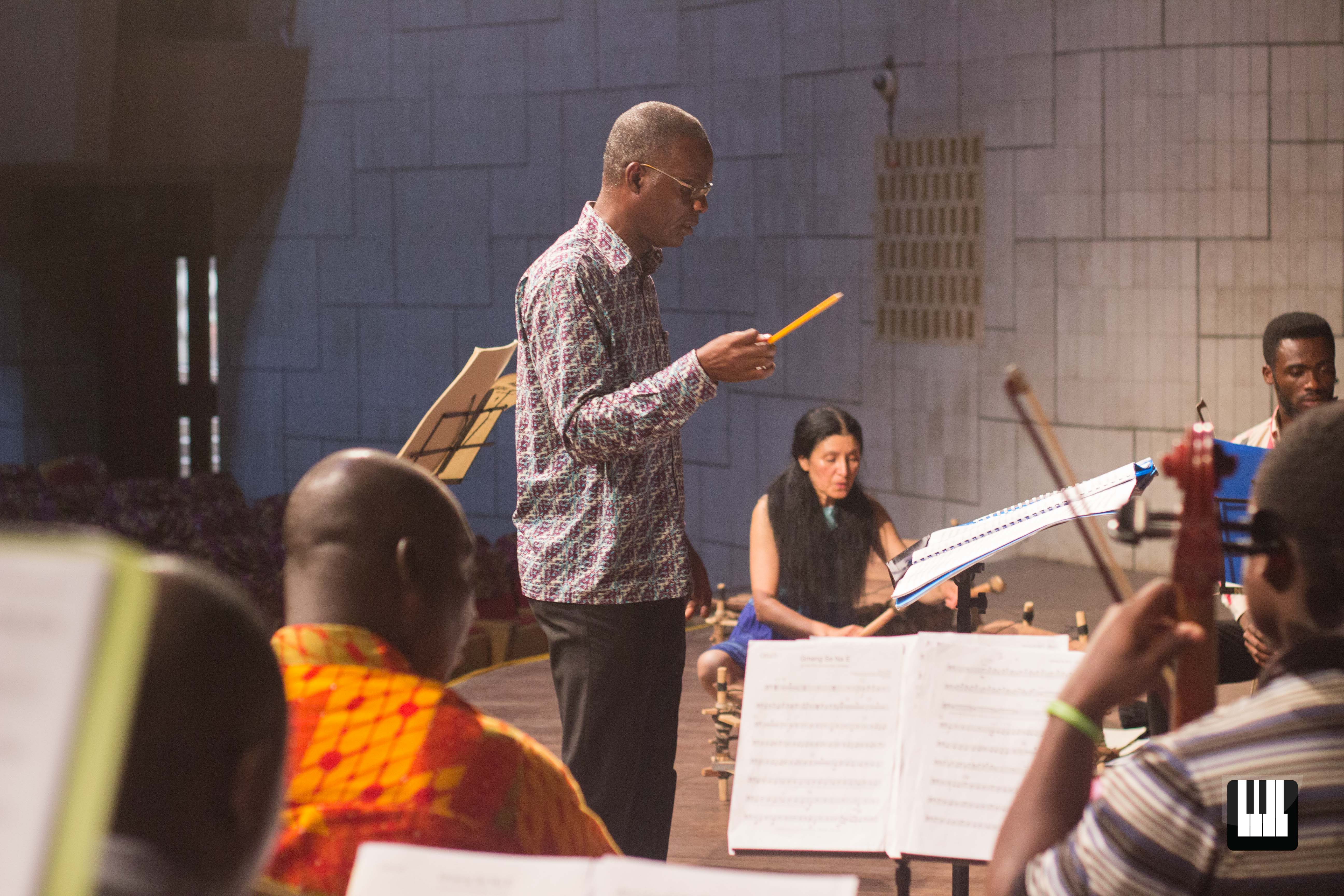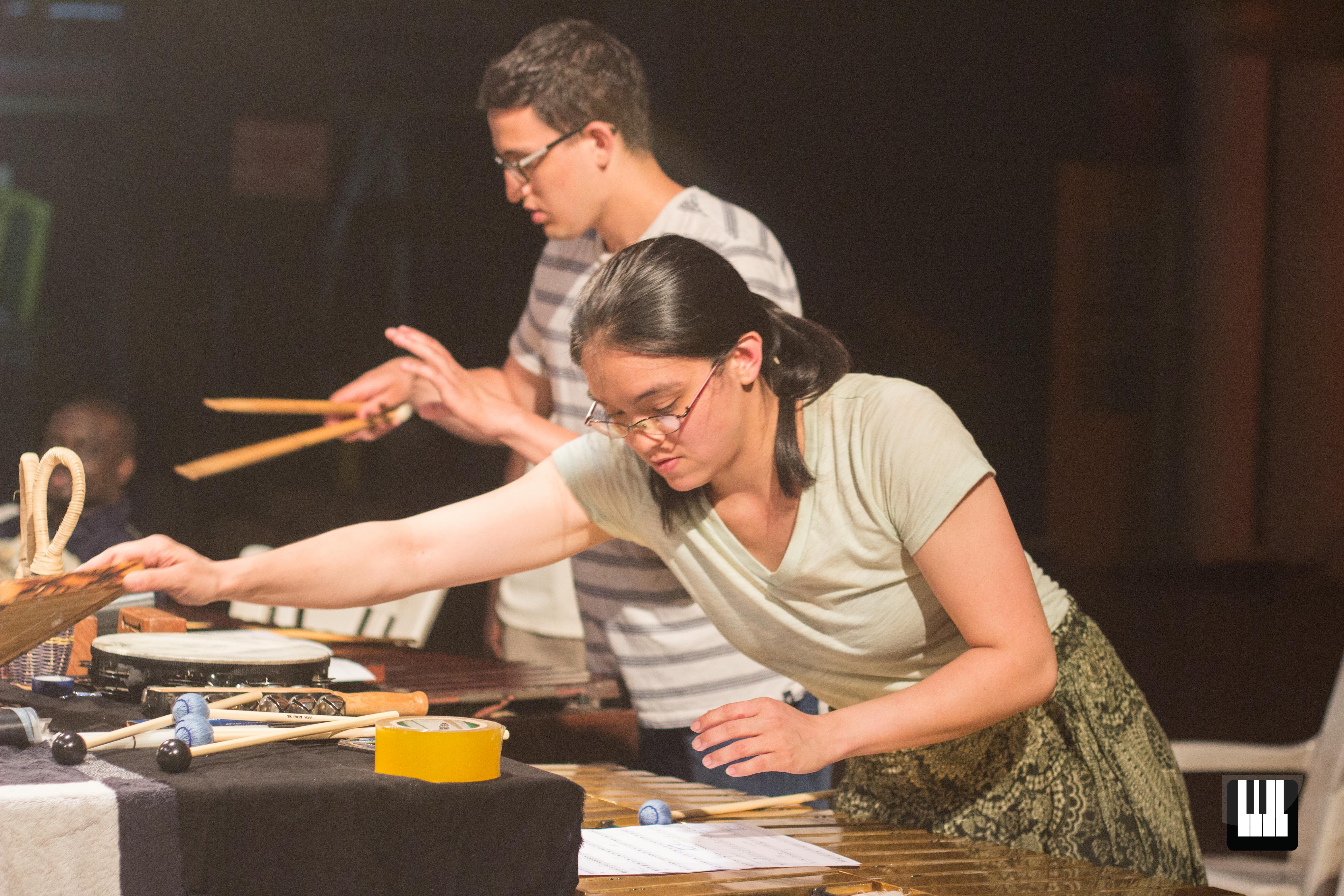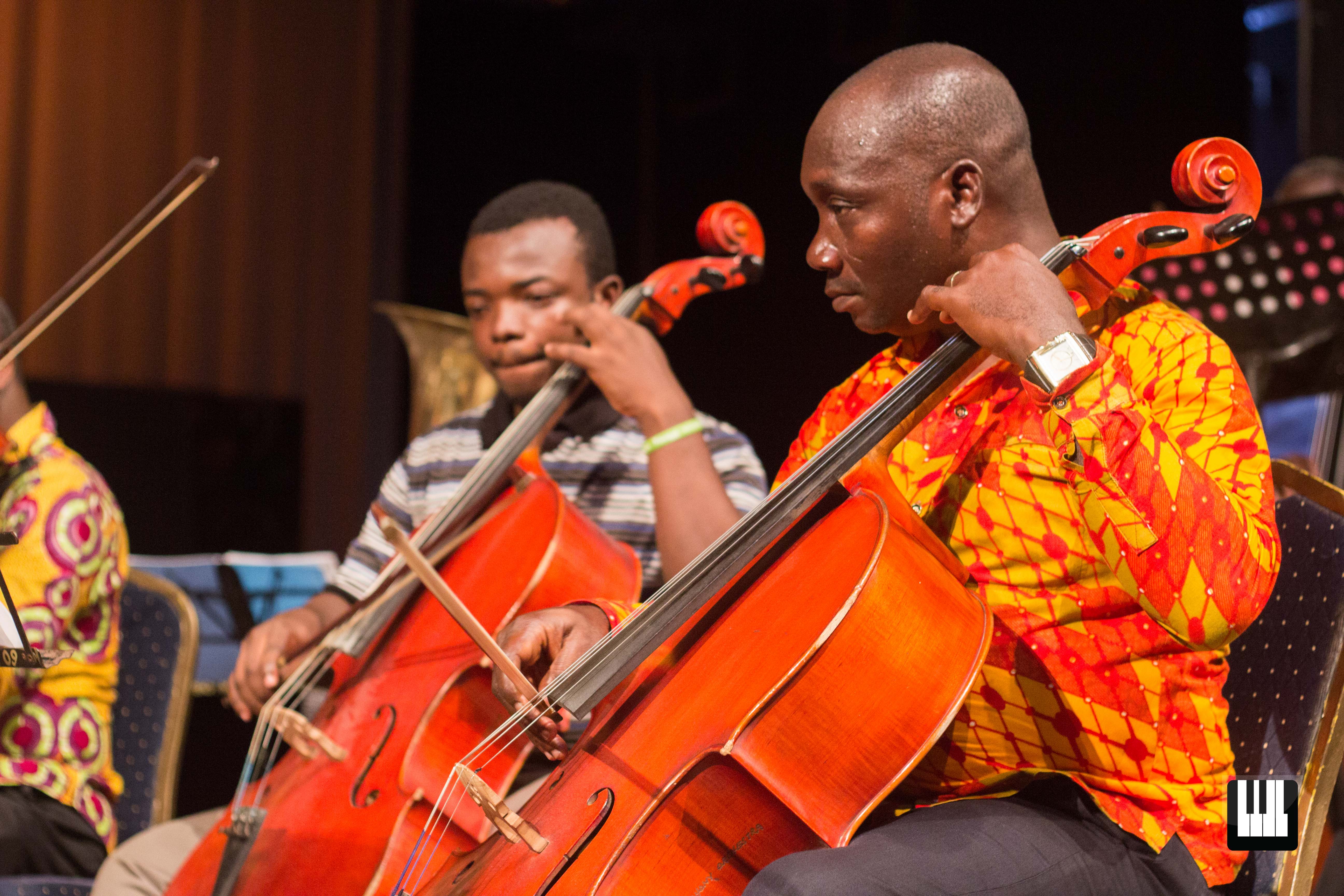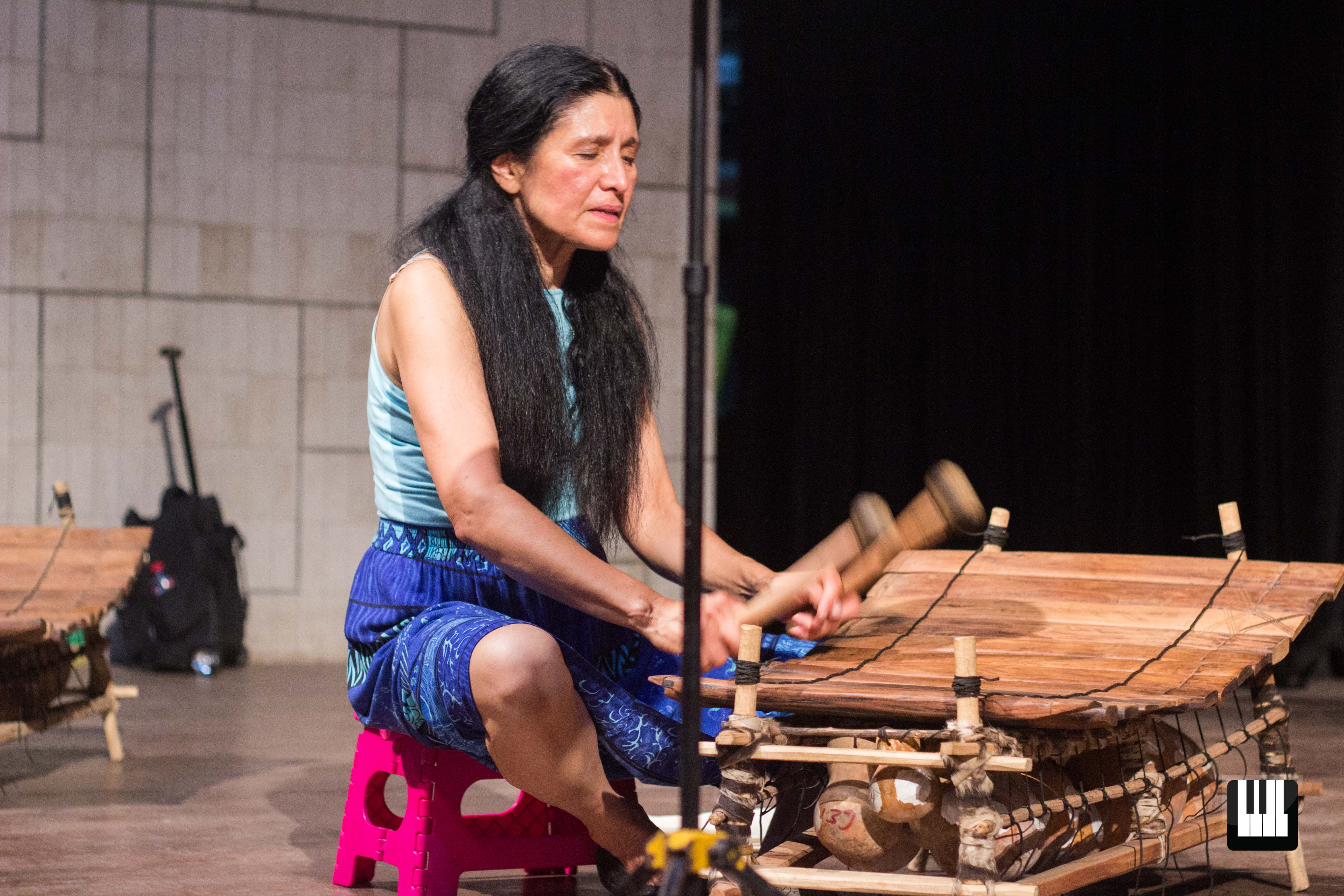Valerie Naranjo: The Journey to Tierra Pura
This weekend, Valerie Naranjo, a wildly successful percussionist and professional xylophone player, along with the National Symphony Orchestra, treats serious fans of music to something familiar yet different. Over two concerts on Saturday and Sunday, compositions for xylophone (or gyil) and orchestra will be performed at Tierra Pura, a collaboration between the two musical heavyweights that is in its second year.
We caught up with Valerie and the orchestra earlier in the week during one rehearsal session, after which we had an extensive chat with the inspiring lady behind the effort to make a global statement with the ancient instrument.
Our conversation began with an extensive reflection on mentorship, beginning with one of the artistes she’s worked with, whom she respects the most, Tori Amos, later segueing into her life with Kakraba Lobi and how that brought about her concert series.
CMG: You’ve mentioned that you were a fan of Tori Amos. We’ve had a feel of her style of music before. It’s very dark.
Valerie: She’s had a rough time. As well as being a performer who codifies the darkness in her life, she has been a major force for helping young women who have had the same problems she’s had. That is why I have tremendous respect for her. She’s living her life to help others.
CMG: Your appreciation of Tori seems to go well beyond her music.
Valerie: Yes! I discovered her in my fifth Saturday Night Live show, when she was the guest artiste. I was asked to help out since she couldn’t bring a drummer. In meeting her, I learned she had a mentor: a much older woman whom she relies on for advice. I really respect that, because I also had a mentor in life. My main mentor was the late Kakraba Lobi, the xylophonist from the Upper West (of Ghana).
CMG: How did you discover Kakraba Lobi?
Valerie: I was attracted to his music. When I began my university studies, we would transcribe music from the Western canon, written for other instruments, for the marimba. I knew the xylophone originated from West Africa, and figured there must be some authentic music written for the instrument.
I was going through record shops in the Harlem, looking for the parentage of the marimba. I found a recording at The African Record Center. That was when I knew I’d found what I was seeking.
CMG: How did that moment feel?
Valerie: It was like coming home. You know, I am a Red Indian. My childhood was spent listening to marimba music in Mexico, and I loved it. But I also felt the instrument had much more potential. Perhaps subconsciously, I was always seeking it. When I heard his music, I felt this is what I had been looking for. I knew I had a future with this maestro and his music.
At a time without email, I had to write to the record company (in England) asking for his address, and wrote to him. I asked if I could study with him, and he was kind enough to agree. He first taught me in 1991, at the Riviera Beach Hotel, which was close to the Arts Center in Accra.
CMG: How did your lessons go?
Valerie: He taught me to play the pirey, the music played at a funeral before any dance music is played. It is a long, non-improvised solo which people are meant to sit and pay attention to. I would dare to call it the “classical music” of the Lobi tribe. We did pirey lessons for a week.
CMG: Why?
Valerie: Because it introduces the student to the proper way to play the instrument. He felt that without that training, I wouldn’t progress in a straightforward manner.

CMG: Tell us more about your relationship with Kakraba.
Valerie: I was very close to him. When my father died, he was the first person outside of my family I called. I picked up the phone and said: “Baba Mr. Kakraba, my father is dead.”
CMG: How did he react to that?
Valerie: (imitating Kakraba Lobi) “Oh, sorry sorry sorry…” He knew I was in pain. He was very empathetic. Right when I started studying with him, I observed how much he made it possible for me to study in the best way possible.
I respected him a lot for his musicianship, but also for his background. He came from a poor family of farmers. When he decided he wanted to do something unusual, he was ostracised by his people for attempting to break the mold. But he couldn’t be broken. He left his hometown for Kumasi, where he tried to make it as a taxi driver and a kente weaver. Those endeavours failed. When he moved to Accra, he tried to get a construction job. He wasn’t allowed to work because of his small stature. He ended up being a “waterboy”.
Kakraba came from a family of gifted gyil musicians. One uncle of his who lived in Accra had a xylophone he borrowed and began to play in the market. He was overwhelmed by the response, and figured he could make a living out of that. And that’s something I also did; I tried making a living as a street musician after college!
His boldness carried him to the main radio station in Accra, where he had a chance to record his instrument. The late Prof. Kwabena Nketia heard him and sought him out. Prof. invited him to the International Center for African Music and Dance at Legon, where he became the founding xylophone player with the Ghana Dance Ensemble. He traveled the world with them, where he would play during their costume changes. This got his talent noticed. That was how he began his international career.
CMG: How did that turn out?
Valerie: Eventually, he ended up with a residency in Cologne, Germany. He wasn’t even sure what he was supposed to do with it. The idea of a residency had to be explained to him: he was just told to come and live there , and do what he likes. So he did what he loved: he would go busking in front of the Catholic Cathedral. But he said, the one thing that was very valuable for him was his experience at classical music concerts. He tried to figure out what about a stage performer made the audience tick. Kakraba never went to school, nor learned to read or write, yet he was very intelligent.
CMG: Tell us about your famous moment in the North
Valerie: Well, on my first trip to Ghana, I accidentally found myself at the Kobine Festival, in Lawra. I had no idea the bus I was travelling on was loaded with dignitaries from Accra going back home for the festival. I met an MP who helped me understand what was happening. The gyil featured prominently during the festival, and I had the opportunity to learn from three masters, who all wanted to help me.
Eventually, I met the chief of the area. He interviewed me about my interest in playing the gyil. Then he gave me the chance to play before him and a council of elders.
He must have enjoyed my playing, because at one point he stood up and danced! At the end of my playing, a big argument broke out among the elders about what to do with me. I had brought two traditions into conflict: on the one hand, they were supposed to help visitors, give them what they need and support them. On the other hand, women were not to play the gyil.
CMG: How was that resolved?
Valerie: The chief ruled that women were now allowed to play the gyil. He said it in English. That was when I realised what was happening.
CMG: Did his ruling have a lasting effect on the community?
Valerie: Such things don’t change the tradition immediately. But fourteen months after that event, in a festival in Nandom, a neighbouring village, a woman placed second in a gyil competition. She had been playing in secret, but because of my experience, she came out and was allowed to compete. Right now, female students who are interested in the gyil are not discouraged.
We faced a similar situation in America. When I was young, women weren’t seen as drummers. And it seemed odd when they were very good at it. But this is changing rapidly.

CMG: Let’s talk a bit about your commercial success on Saturday Night Live, one of the most celebrated Late-Night shows on American television. How does it feel to have overcome your disadvantaged background to find yourself in a position of visibility, power and wealth?
Valerie: First of all, I love the team I work with. It is a great honour to be part of a team that takes risks, speaks about the politics we don’t like, and causes our audience to laugh and think deeply. It makes me thank the Creator with all of my heart, that I can be there to encourage other people. I feel a joyful sense of responsibility: with fortune comes responsibility.
CMG: Now let’s talk about Tierra Pura. What’s in the name?
Valerie: It means “Lovely Land” or “Pure Earth”. It is named after one of the pieces I wrote, which will be performed this weekend. I wrote it during a New York University project that took me to Ghana, Cuba and then to India in 2017. At NYU, we have the Global Institute for Advanced Studies, which links NYU faculty from its several campuses in an effort to exchange and explore experiences.
My experience of the quaint Cuban life inspired Tierra Pura. The piece naturally developed in the days following my return. Now while I was in Ghana in 2016, I chanced on the Symphony Orchestra and met their director, Mr. Annoh. It was then that I decided to do the piece with them. I haven’t told you the end of my Kakraba story.
CMG: Go on…
Valerie: Kakraba shared with me his love for symphonic music while we were at an airport in the US, in 2007. He said, “One day, I am going to play with an orchestra”. Immediately, I started working on an orchestration of his signature piece, “Fer Barre Kona Jeno”, which you will hear on Saturday and Sunday. My plan was to make it happen when he returned to Ghana. He died a few months after that day. It was the saddest day of my life.
CMG: How did that inspire this concert series?
Valerie: I decided to carry on his legacy.
CMG: This is your second Tierra Pura concert. How was it received?
Valerie: I was very happy. There were a lot of people around. I was surprised at the number. And a lot of women came by. I spoke to a lot of them after the concert. They were inspired. When I was younger, I thought women just talked about their boyfriends when they were together, but that is not true. Feminine energy can come together to change things! I first learned this from my young women’s Bhuddist group. To see my guests tell me about their church women’s groups was inspiring.

CMG: Did they enjoy the music?
Valerie: I feel that they did. One of my guests, a hotelier in Accra came with her daughter Afia. Her husband was a great percussionist. She told me she was blown away by the performance. And she’s someone who knows her music. I felt if I could touch a heart, then my efforts were more than technical. In my life, I’ve found that every great musician has at the front of their mind how they can touch a heart, how they can build a bridge, not just show off what they can do.
CMG: What is your vision for Tierra Pura?
Valerie: I want the Symphony Orchestra to do an international tour. My immediate fascination is that this is traditional Ghanaian music put together with the Ghana Symphony Orchestra, the ambassador of symphonic music from Ghana.
It is the job of a symphony orchestra to play symphonic music, and this time, the music is distinctly Ghanaian. I could have done this with the London Symphony Orchestra, but now the music must come home. I think there’s a message there. That is my dream. My more immediate goal is to make a recording and pursue funding for a larger project.
CMG: Do you think you’ve abandoned your native American roots by embracing an exotic culture?
Valerie: When I first went to the North, one of my hosts told me he knew my culture. He had lived in Santa Fe for a while, and assured me I was going to love Lawra. I didn’t know what to expect until the following morning, when I woke up to the startling familiarity of the rural life. I felt like I was home.
But I will add that I have paid homage to my Ute culture with my first recording. Secondly, no matter what you do in life, someone’s going to hate it, someone’s going to love it, and someone’s not going to care. So why limit yourself because of what someone will think of it? You must go all out, and let your work be judged. I know that I have been judged by my people, by Ghanaians, by prominent gyil players, and that is all okay. It means I am doing something.

CMG: The gyil is really tied to your identity. Why have you adopted this specific instrument, out of all other percussion instruments.
Valerie: It all goes back to when I first heard a wooden-bar instrument in Mexico. I must’ve been six or five. I have told you about my search for the voice of the marimba, and how finding it in Kakraba’s music quenched that thirst.
After seventeen years of mentorship and performing together, this instrument has led me to the most incredible experiences in life. You know, when something saves your life, you hang on to it. And I love the sound! They say in the Upper West, when you play the gyil, you never get sad. I suspect that is true.
CMG: What music should we expect at Tierra Pura?
Valerie: We’re doing eight pieces. We will perform two Kakraba compositions, two pieces from one of his students, and Tierra Pura. We will also play “Love Afia”, which I wrote for my hotelier friend. I hope this concert tells the story of the legacy of Ghanaian music, how beautiful it is, and how it is right here, being created everyday in this building.
I hope it brings a smile and an idea of what we already have, and where we can go.
Valerie’s discovery and promotion of an instrument that is not popular in Ghanaian inspires us to take a closer look at what gems lie hidden in our shared cultural legacy. Her successful pursuit of the original music of the marimba can serve as an inspiration for composers looking to dig deeper into the musical language of various cultures they’re yet to consider.
For serious listeners of music, Tierra Pura presents an opportunity to rediscover original Ghanaian music.